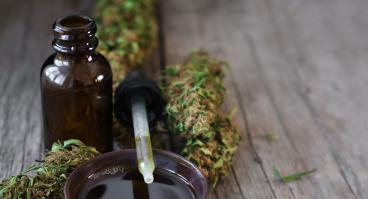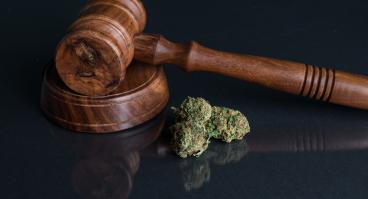
Table of Contents
Author(s)
Mapping State Laws for Impairing Hemp Products
Hemp is a strain of the cannabis plant that is legally defined as having less than .3% delta-9 tetrahydrocannabinol (THC) by dry weight. Delta-9 THC is the primary psychoactive compound in cannabis responsible for marijuana’s "high". By requiring hemp to have a low concentration of delta-9 THC, lawmakers meant to ensure that the plant cannot cause impairment.
The delta-9 THC threshold worked until it didn’t. In 2018 Congress broadly legalized the production and sale of hemp, bringing to life a vast market for hemp-derived products. Contrary to the expectations of some lawmakers, many popular products do cause impairment. In jurisdictions with few regulations, it is not uncommon to find hemp products that are more potent than what is allowed in adult-use marijuana markets.
Hemp products with legal amounts of delta-9 THC are available in most states. Manufacturers also use hemp to produce THC isomers—compounds similar to delta-9 THC in structure and effects. Some of these, like delta-8 THC, are naturally occurring in the hemp plant, while others, like THC-acetate-ester, are not. For more information on hemp-derived cannabinoids, check out our cannabis explainer[link].
States are cracking down on the hemp-derived cannabinoid market in a variety of ways. Some have enacted age restrictions without addressing issues like product potency. Others have restricted product potency by applying the .3% delta-9 THC threshold to all THC isomers. But the weight-based metric still allows heavier items, like drinks and edibles, to contain potent amounts of THC. To account for this, some states have also specified milligram caps for total THC content.
Others have banned hemp-derived cannabinoids that are created through a chemical process. This effectively removes many impairing hemp products from the market, because naturally-occurring compounds like delta-8 THC exist in miniscule amounts that do not have significant effects unless they are modified with other chemicals. Several adult-use marijuana states have enacted strict measures to tamp down the hemp market, while others have moved toward regulating hemp and marijuana under one cannabis umbrella.
The map below shows the legal status of impairing hemp-derived cannabinoids in each state:
Map — Title
Legend Notes
Legal: Impairing hemp-derived cannabinoids are legally available with few restrictions.
Legal, Some Restrictions: Impairing hemp-derived cannabinoids are legally available but have some restrictions, such as milligram caps on total THC content, prohibitions on certain product types, and limits on where products can be sold.
Heavily Restricted: Cannabinoids that are produced through isomerization are prohibited or potency caps are so low that legal products are unlikely to cause impairment. Hemp-derived delta-9 THC is still legal.
Illegal: Cannabinoids that are produced through isomerization are prohibited and hemp with any detectable amount of THC is prohibited or only available where marijuana is sold.
Mixed: The state has taken the position that impairing hemp-derived cannabinoids are illegal but enforcement is so limited or locally variable that one classification does not apply to the whole jurisdiction.
Additional Notes
These reference terms used in the state details:
THCa — Tetrahydrocannabinol acid, a naturally occurring compound in hemp and marijuana plans that converts into delta-9 THC when it is heated. Some states require the combined amount of THCa and delta-9 THC to be less than .3% concentration by weight for legal hemp products. This limits product potency.
Total THC — Refers to state potency limits that restrict the total concentration of all cannabinoids, including THCa and THC isomers (delta-8, delta-9, delta-10, etc.).
Isomerization — Refers to the chemical process by which naturally-occurring compounds in the hemp plant are modified or transformed into other cannabinoids. State laws may use other terms to refer to this process, including “chemical conversion”, “synthetically derived”, and “chemically-modified” hemp derivatives.
This material may be quoted or reproduced without prior permission, provided appropriate credit is given to the author and Rice University’s Baker Institute for Public Policy. The views expressed herein are those of the individual author(s), and do not necessarily represent the views of Rice University’s Baker Institute for Public Policy.



